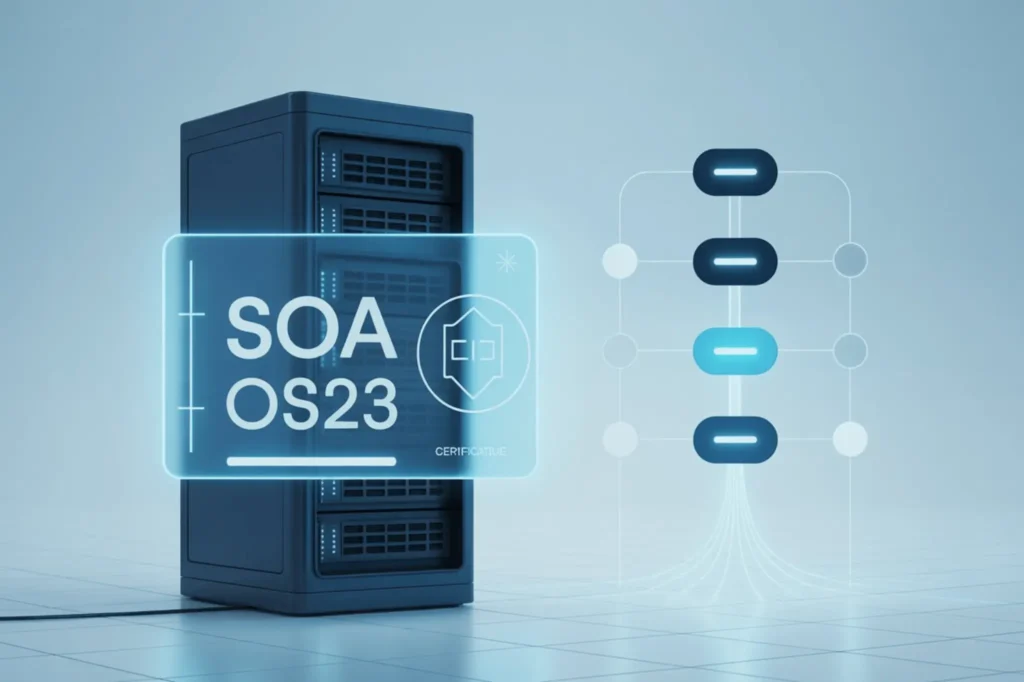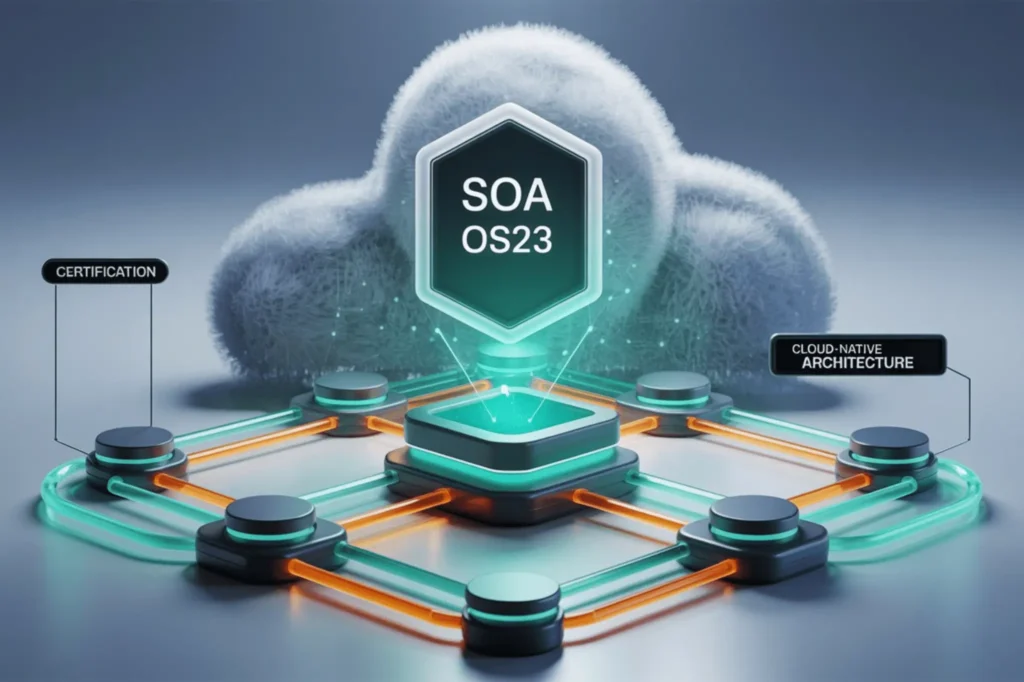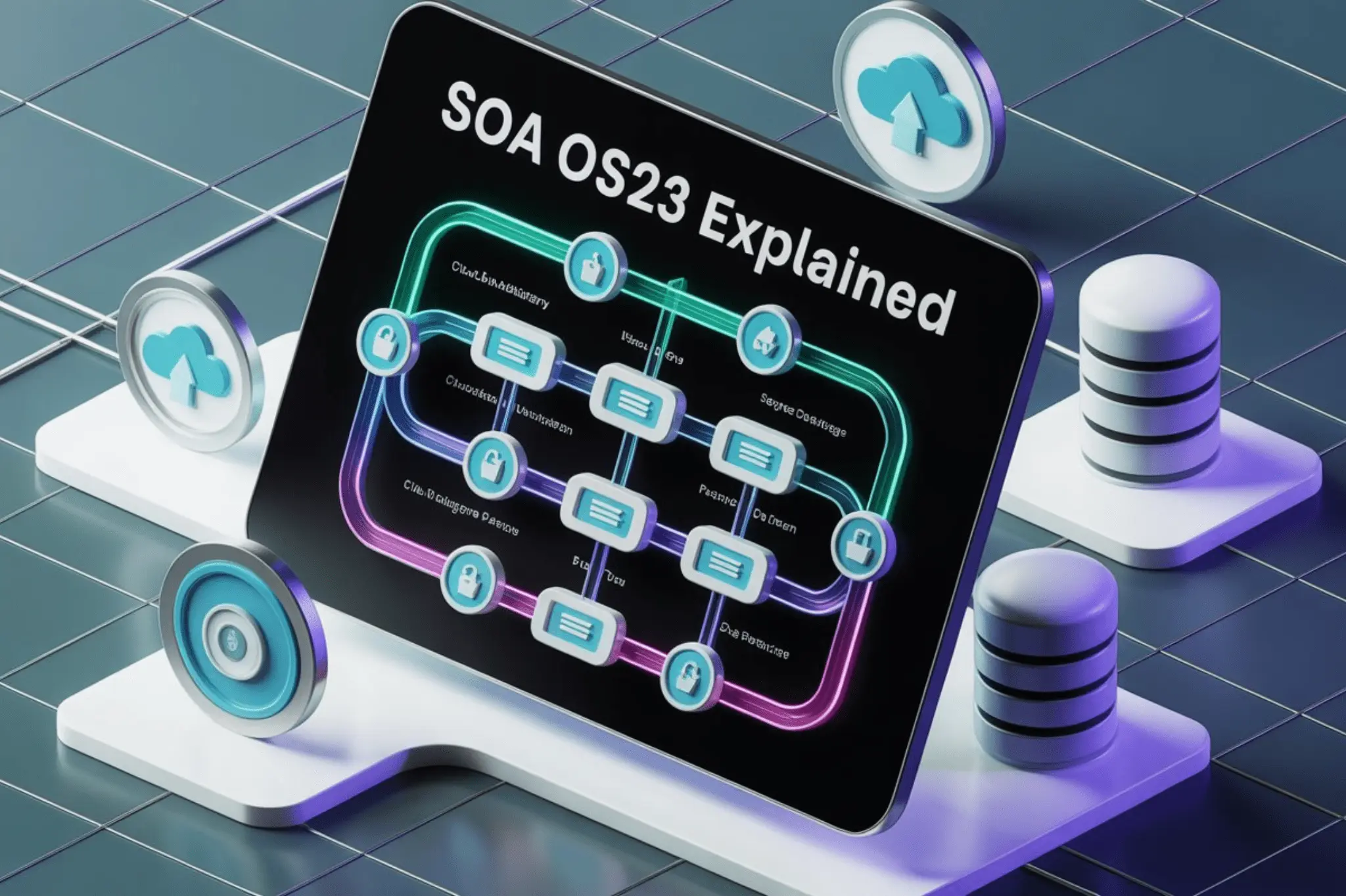What is SOA OS23?
SOA OS23 is a multifaceted term with relevance in both construction compliance and digital architecture. In Italy, it serves as a regulatory certification for demolition contractors involved in public works. In IT and enterprise software, SOA OS23 represents a service-oriented architecture framework that aligns traditional SOA principles with cloud-native microservices, scalable infrastructure, and dynamic governance.
SOA OS23 Certification in Italy
In the construction and public works sector in Italy, SOA OS23 certification is issued to verify a contractor’s capability to safely and professionally carry out demolition operations. Governed by Presidential Decree 207/2010, it is especially required for government contracts exceeding €150,000 or projects with strict environmental standards. It assures that the applying company has the technical, legal, and financial eligibility to handle complex dismantling tasks in compliance with safety and sustainability standards.
Who Needs SOA OS23 Certification?
Contractors bidding for high-value public tenders, firms specializing in hazardous material removal, and demolition companies using advanced or eco-friendly methods typically require SOA OS23 certification. Even companies outside of public procurement benefit from the credential, as it strengthens their reputation and increases trust with private clients.
When Is SOA OS23 Certification Required?
This certification is mandatory when the scope of a construction or demolition project includes significant environmental impact, structural complexity, or falls under the categories of OG1 (civil works) or OS21 (structural works). Certification is often a precondition for being allowed to participate in public tenders, especially those funded by regional or national agencies.
Benefits of SOA OS23 Certification
-
Builds credibility with government authorities and clients
-
Proves technical capability and operational readiness
-
Allows participation in tenders over €150,000
-
Enhances company image and sustainability alignment
-
Acts as a legal requirement in environmentally sensitive projects
Understanding SOA OS23 in IT Architecture
In the software world, SOA OS23 is not a formal product but a conceptual framework that merges service-oriented architecture with modern-day technologies like Kubernetes, RESTful APIs, and real-time monitoring. It provides structure for designing and managing distributed applications, ensuring services are reusable, independently deployable, and securely governed.
Key Features of SOA OS23 Framework
-
Unified Service Registry: Central hub for service metadata and automated discovery
-
API Gateway: Safe traffic control for GraphQL, REST, and gRPC interfaces
-
Workflow Orchestration: BPMN-based flow management for service automation
-
Real-Time Analytics: Integration with ELK, Prometheus for instant insights
-
Policy-Driven Security: Role-based access controls, logging, and encryption
-
Developer Templates: Reusable SDKs, schemas, and CI/CD pipelines
-
Modular Scaling: Works with orchestrators like Kubernetes for auto-scaling
SOA OS23 vs Traditional SOA
Unlike legacy SOA, which often relied on static service discovery and SOAP-based communication, SOA OS23 supports dynamic configurations, flexible scaling, and cross-platform integration. Traditional systems were monolithic and VM-dependent, whereas OS23 prioritizes containerization, real-time metrics, and API standardization. It offers agility, extensibility, and simplified developer workflows, making it fit for modern digital ecosystems.
Benefits for Developers and Enterprises
Adopting SOA OS23 delivers dual value—technical flexibility and business efficiency. Developers benefit from standardized APIs and built-in development tools, reducing time-to-market and simplifying deployment. Enterprises gain from improved governance, scalability, and risk mitigation. With features like automated service discovery and intelligent monitoring, businesses can pivot faster and maintain operational continuity.
How SOA OS23 Supports Digital Transformation
By embracing SOA OS23, organizations can break free from tightly coupled legacy architectures and transition toward modular, API-first systems. This transformation fosters seamless integration across business functions and supports initiatives like omnichannel customer experiences, data-driven decision-making, and agile product development. It’s especially valuable for industries dealing with complex workflows or needing to rapidly scale digital services.
Common Use Cases of SOA OS23
-
Enterprise Modernization: Transitioning from monoliths to microservices
-
API Platforms: Creating internal and external developer portals
-
Cloud-Native Applications: Deploying across hybrid or multi-cloud
-
IoT Orchestration: Managing real-time, device-driven events
-
Business Automation: Streamlining inter-service workflows and data flow
Sustainability in SOA OS23 Architecture
From a software perspective, SOA OS23 improves sustainability by maximizing system resource usage. Auto-scalable services can handle varying workloads without waste. Lightweight containers and service meshes reduce latency and CPU overhead. Policy enforcement and monitoring ensure energy-efficient runtime behavior, contributing to carbon-conscious infrastructure planning.
Role of Technology in Demolition & Architecture
In physical demolition, technologies such as Building Information Modeling (BIM), drones, robotics, and AI-driven safety mechanisms play a pivotal role. These tools enhance planning accuracy and reduce human risk. Similarly, in software systems, SOA OS23 utilizes orchestration engines, telemetry tools, and auto-healing scripts to improve uptime and maintain operational quality.
Developer Experience in SOA OS23
SOA OS23 is designed to empower developers. By offering tools like pre-built SDKs, templates, and contract-first development (e.g., OpenAPI specifications), it simplifies the service lifecycle from design to deployment. Onboarding new developers becomes quicker, and maintaining large-scale service environments is far less painful compared to traditional systems.

Policy Governance in SOA OS23
One of the key enablers of operational stability in SOA OS23 is centralized policy governance. Through tools like OAuth2, RBAC, and audit logging, organizations can manage access control, ensure traceability, and enforce compliance rules. These policies can be scoped to individual services or system-wide protocols, allowing for granular and scalable governance.
Community Insights & Early Adoption Reviews
Many early adopters have praised SOA OS23 for improving system visibility, operational control, and deployment speed. Developer teams report faster delivery timelines and simplified integration strategies. On the flip side, some mention the steep learning curve and governance overhead in highly regulated industries. Still, most agree that the benefits significantly outweigh the initial complexity.
Challenges in Implementing SOA OS23
Despite its advantages, implementing SOA OS23 can be difficult. Architecture planning must address distributed system design, service dependency management, and performance tuning. Vendor lock-in is a risk if proprietary tools are used without open standards. Testing becomes more complex as services grow in number and interdependencies. Strong leadership and iterative rollouts can help mitigate these risks.
How to Get Started with SOA OS23
-
Assess Current Systems: Identify pain points, monolithic constraints, and candidate services
-
Define Objectives: Align implementation with business goals like faster delivery or better compliance
-
Create Governance Policies: Establish standards for naming, versioning, security, and documentation
-
Automate Infrastructure: Set up CI/CD pipelines, monitoring, and infrastructure-as-code
-
Educate Teams: Train staff in service design, testing, and microservice principles
-
Engage with Community: Leverage tutorials, forums, and vendor documentation
Testing Strategies for SOA OS23 Systems
Testing distributed systems requires specialized strategies. Contract testing ensures each service complies with its interface. Integration testing validates workflows, while load and stress testing simulate peak demand scenarios. Observability tools like Prometheus and Grafana can alert on anomalies. The goal is not just to find bugs but to confirm resilience, latency tolerance, and fault isolation.
Cost Considerations
The cost of SOA OS23 varies by implementation scope. In construction, certification costs include government application fees, audits, and annual renewals. In IT, upfront costs involve infrastructure setup, license procurement, and staff training. However, long-term gains—like improved agility, reduced downtime, and faster innovation—deliver a compelling ROI.
Comparing SOA OS23 to Other Frameworks
SOA OS23 stands out by offering strong governance and cloud-native elasticity. Compared to basic microservices setups, it provides better visibility and security out-of-the-box. It offers you greater control and fewer cold-start problems than serverless architecture. For organisations that need modular scalability, security, and consistency, SOA OS23 is frequently a better long-term option.
Security and Risk Management
In both demolition and digital environments, security is paramount. SOA OS23 enables role-based access control, encrypted communications, and real-time logging. Security testing is integrated into CI/CD pipelines, and threat modeling helps prevent potential breaches. Risk management policies, including vendor diversity and fallback protocols, also form a critical part of deployment planning.
Open Standards and Avoiding Vendor Lock-in
To avoid becoming dependent on proprietary systems, organizations using SOA OS23 should choose tools and frameworks based on open standards like OpenAPI, OAuth2, and Kubernetes. Interoperability ensures flexibility for future upgrades, partner integrations, and system migrations. Transparent documentation and extensibility options should also be non-negotiable evaluation criteria.
Change Management & Organizational Readiness
The transition to SOA OS23 involves not only technical changes but also cultural shifts. Teams must move from siloed development to collaborative DevOps. Leadership must support iterative rollouts, feedback cycles, and continuous learning. Change champions within departments can ease resistance and act as internal educators.

FAQs
What industries use SOA OS23?
Construction, government, e-commerce, healthcare, and IoT-heavy sectors.
Is it legal to operate demolition works without SOA OS23 in Italy?
No, not for public tenders over €150,000 or regulated demolition projects.
Can startups adopt SOA OS23 in IT?
Yes, especially if they aim to scale and integrate with partners or APIs.
How does SOA OS23 differ from traditional SOA?
Real-time observability, automated discovery, and containerisation are introduced.
Does it support multi-cloud environments?
Of course. SOA OS23 is designed to operate on multi-cloud or hybrid infrastructure.
Conclusion
SOA OS23 is a critical standard for both infrastructure and information architecture in 2025. From legal compliance in the demolition industry to resilient and scalable software platforms, its versatility is impressive. By understanding its nuances and implementing it thoughtfully, organizations can unlock performance, reliability, and long-term value.

